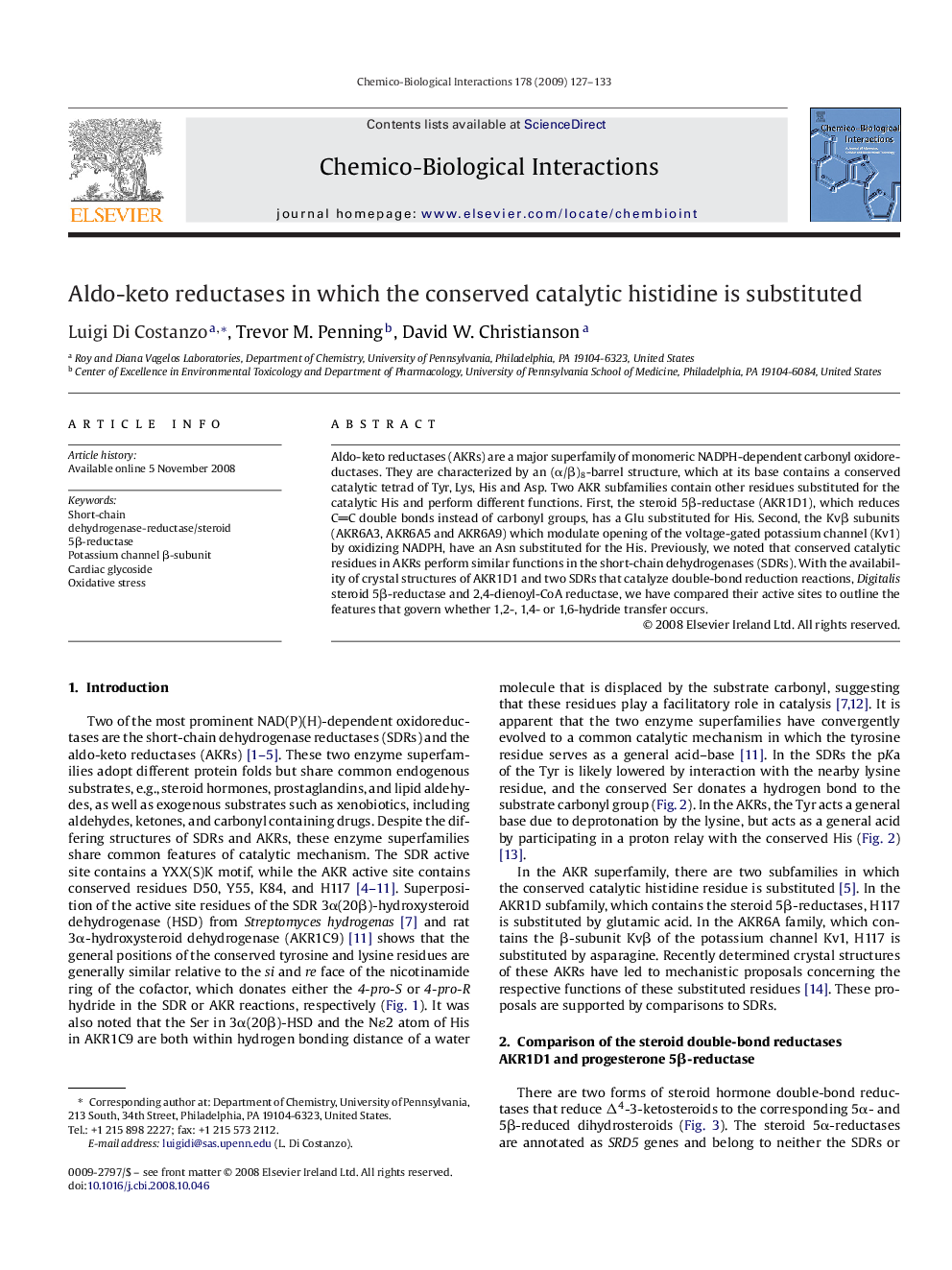| Article ID | Journal | Published Year | Pages | File Type |
|---|---|---|---|---|
| 2582331 | Chemico-Biological Interactions | 2009 | 7 Pages |
Abstract
Aldo-keto reductases (AKRs) are a major superfamily of monomeric NADPH-dependent carbonyl oxidoreductases. They are characterized by an (α/β)8-barrel structure, which at its base contains a conserved catalytic tetrad of Tyr, Lys, His and Asp. Two AKR subfamilies contain other residues substituted for the catalytic His and perform different functions. First, the steroid 5β-reductase (AKR1D1), which reduces CC double bonds instead of carbonyl groups, has a Glu substituted for His. Second, the Kvβ subunits (AKR6A3, AKR6A5 and AKR6A9) which modulate opening of the voltage-gated potassium channel (Kv1) by oxidizing NADPH, have an Asn substituted for the His. Previously, we noted that conserved catalytic residues in AKRs perform similar functions in the short-chain dehydrogenases (SDRs). With the availability of crystal structures of AKR1D1 and two SDRs that catalyze double-bond reduction reactions, Digitalis steroid 5β-reductase and 2,4-dienoyl-CoA reductase, we have compared their active sites to outline the features that govern whether 1,2-, 1,4- or 1,6-hydride transfer occurs.
Keywords
Related Topics
Life Sciences
Environmental Science
Health, Toxicology and Mutagenesis
Authors
Luigi Di Costanzo, Trevor M. Penning, David W. Christianson,
